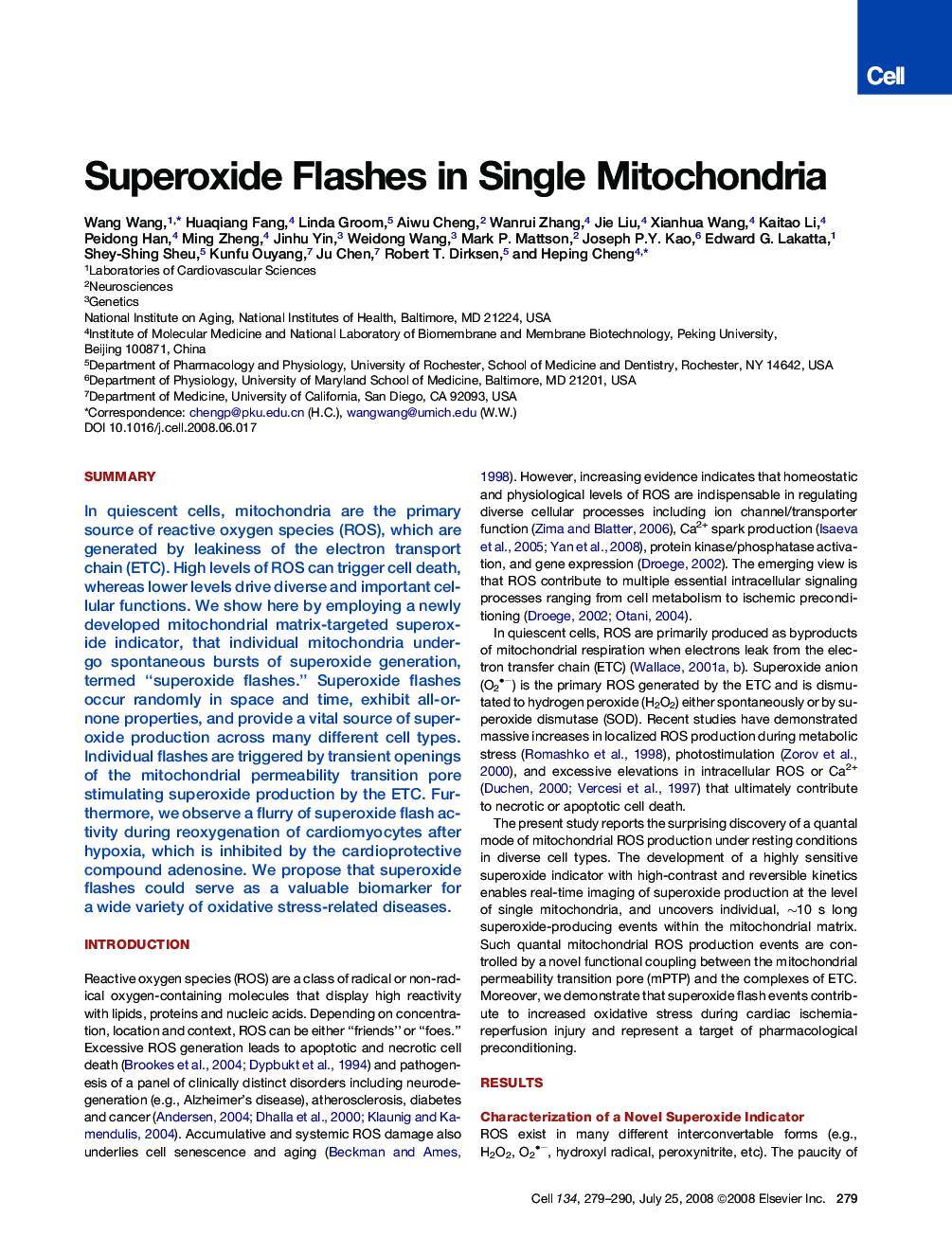| Article ID | Journal | Published Year | Pages | File Type |
|---|---|---|---|---|
| 2037324 | Cell | 2008 | 12 Pages |
SummaryIn quiescent cells, mitochondria are the primary source of reactive oxygen species (ROS), which are generated by leakiness of the electron transport chain (ETC). High levels of ROS can trigger cell death, whereas lower levels drive diverse and important cellular functions. We show here by employing a newly developed mitochondrial matrix-targeted superoxide indicator, that individual mitochondria undergo spontaneous bursts of superoxide generation, termed “superoxide flashes.” Superoxide flashes occur randomly in space and time, exhibit all-or-none properties, and provide a vital source of superoxide production across many different cell types. Individual flashes are triggered by transient openings of the mitochondrial permeability transition pore stimulating superoxide production by the ETC. Furthermore, we observe a flurry of superoxide flash activity during reoxygenation of cardiomyocytes after hypoxia, which is inhibited by the cardioprotective compound adenosine. We propose that superoxide flashes could serve as a valuable biomarker for a wide variety of oxidative stress-related diseases.
